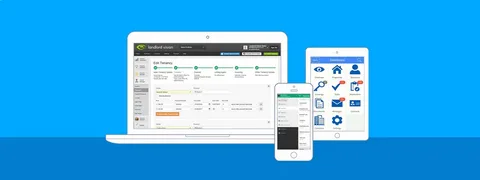For most landlords, “Making Tax Digital” conjures images of tedious data entry, quarterly submissions, and compliance deadlines. The common assumption is that digital tax software exists merely to satisfy HMRC. Yet, for those willing to look beyond the surface, Making Tax Digital software for landlords offers far more than a compliance tool—it can be a lens into the health and performance of a property portfolio.
The key lies in perspective. Landlords who treat their properties as passive investments often miss subtle patterns that reveal financial inefficiencies. Traditional spreadsheets or paper records rarely capture these nuances. Digital platforms, however, automatically organise income, expenses, and receipts, creating datasets that can be analysed for trends. For example, a property might consistently show higher maintenance costs than anticipated, or a tenant’s delayed payments may signal a need for stricter screening or rent collection strategies. In this sense, the software becomes not just a reporting tool but a strategic dashboard.
Beyond spotting inefficiencies, digital records enable forward-looking decisions. Landlords can model scenarios: How would a rent increase affect overall yield? Which properties might benefit most from renovation? Which investments are draining cash unnecessarily? These questions, once difficult to answer without hours of manual reconciliation, can now be addressed with clarity, almost in real time. The insights are not just operational—they inform investment strategy, portfolio growth, and risk management.
Another often-overlooked advantage is the integration of historical trends. By reviewing digital records across multiple years, landlords can forecast seasonal cash flow issues, anticipate maintenance spikes, or identify patterns in tenant behaviour. This foresight allows for smarter budgeting and financial planning, reducing reliance on end-of-year tax corrections or guesswork. It transforms tax software from a reactive necessity into a proactive planning tool.
Collaboration also becomes easier. Accountants and property managers can access live data, enabling advice and interventions before small problems escalate into financial or compliance risks. This is particularly useful for landlords managing multiple properties or working in partnerships, where delays and miscommunication can have costly consequences.
Yet, the most striking impact of Making Tax Digital software for landlords is behavioural. Landlords who embrace digital tracking often adopt a more disciplined approach to property management. Regularly reviewing metrics encourages timely decisions, from handling overdue rent to planning repairs, and fosters a mindset of continuous improvement rather than annual panic. Compliance becomes a by-product of intelligent management rather than a chore.
Critically, this approach separates proactive landlords from reactive ones. Those who treat the software as merely a means to submit quarterly reports remain in the same cycle of stress and inefficiency that pre-digital methods imposed. In contrast, landlords who view the system as a source of insight are able to make informed decisions, anticipate financial issues, and even optimise tax outcomes strategically.
Ultimately, MTD software is reshaping the property sector. Far from being a dull compliance requirement, it represents an opportunity to professionalise management, enhance decision-making, and future-proof investments. Landlords who harness these insights early will not only satisfy HMRC—they will gain a competitive advantage that traditional record-keeping cannot provide.








